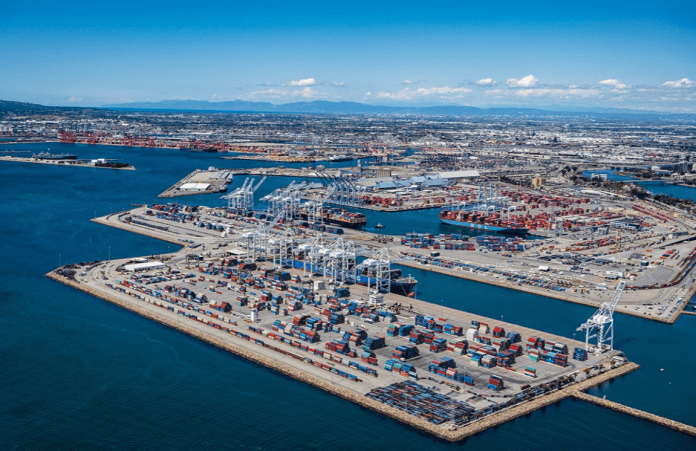The Port of Long Beach (POLB) has surpassed its previous annual cargo handling record at the end of November and is on the verge of processing more than 9 million TEU by the end of 2021.
Through November, dockworkers and terminal operators have moved 8,630,053 TEU at the US second-busiest port, already exceeding by more than 500,000TEU the current annual record of 8,113,315TEU that was set in 2020.
However, during the previous month, container volumes declined by 4.9% compared to the strongest November on record achieved in 2020, completing 745,488TEU.
Imports also dropped by 5.3% to 362,394TEU and exports reached 109,821TEU, representing a decline of 6.4% year-on-year. At the same time, empty containers moved through the Californian port were down by 3.6% to 273,274TEU, according to POLB’s data.
“We intend to maintain our high level of service by working with stakeholders in the goods movement industry to ensure products are delivered swiftly and safely,” said Steven Neal, President of the Long Beach Board of Harbor Commissioners.
Currently, there are 34 container vessels at anchor waiting to enter the San Pedro Bay ports complex, down from more than 80 last month, due to a new queuing process implemented in November by the Pacific Maritime Association, the Pacific Merchant Shipping Association and the Marine Exchange of Southern California.
In addition, a “Container Dwell Fee” that was announced on 25 October has led to the bottlenecks relief. The fee which would charge ocean carriers for containers that remain too long on the docks has been postponed amid a 37% decline in ageing cargo in San Pedro Bay terminals.
Last but not least, the US West Coast port continues to take steps toward the efficient movement of goods, including an ongoing collaboration with marine terminals to expand hours of operation, creating temporary staging areas for full containers and encouraging truck drivers to drop off export containers when picking up an import.
Nationally, the economy is booming despite concerns about elevated consumer inflation, stock market volatility and the Omicron variant of Covid-19, according to a statement. The National Retail Federation is forecasting holiday retail sales to be slightly below the pre-pandemic high reached in 2019.







